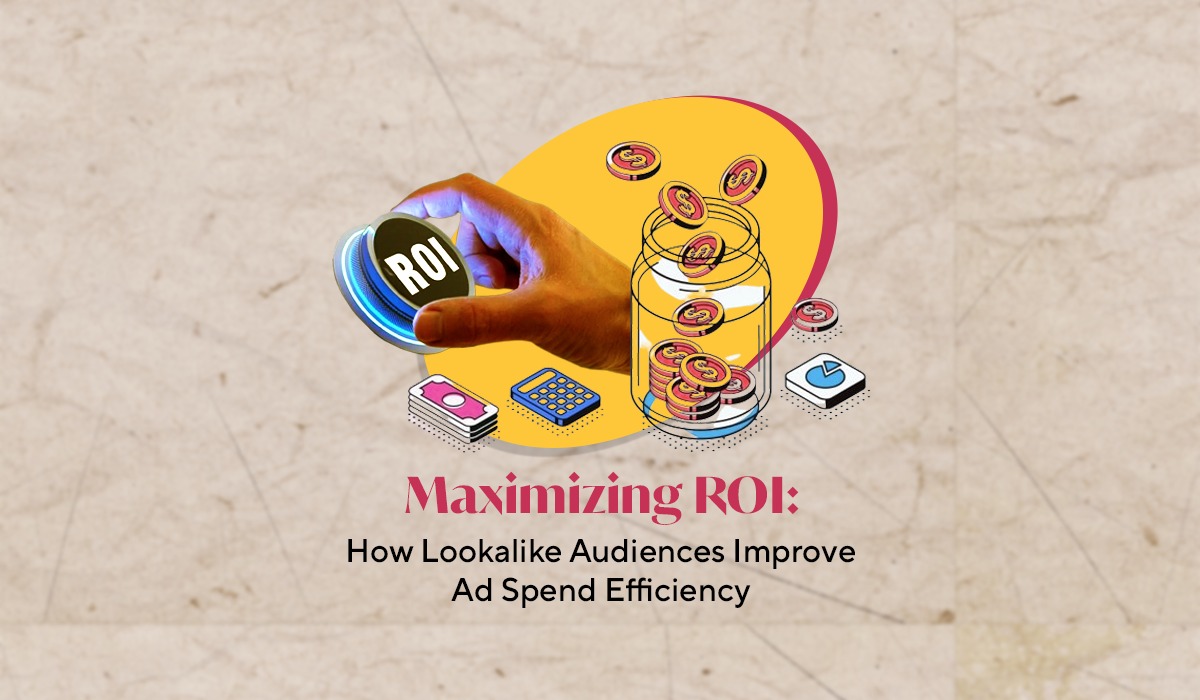In the ever-evolving landscape of digital marketing, advertisers are constantly seeking innovative ways to optimize their return on investment (ROI) and make the most out of their advertising budgets. One powerful tool that has emerged in recent years is using “Lookalike Audiences.” This strategy, harnessed by platforms like Facebook and Google, has proven to be a game-changer in improving ad spend efficiency and maximizing ROI.
So, let us delve deeply into understanding the concept of lookalike audiences and how you can leverage your marketing game.
Understanding Lookalike Audiences
Lookalike Audiences, also known as “similar audiences,” are a marketing technique that leverages data-driven algorithms to identify and target individuals who share similar characteristics, behaviors, and interests with an advertiser’s existing customer base. This method goes beyond traditional demographic targeting and enables advertisers to expand their reach to potential customers who are more likely to engage with their brand, thereby increasing the likelihood of conversions.
The process of creating a Lookalike Audience typically involves selecting a source audience, which could be a list of existing customers, website visitors, or app users. The platform’s algorithm then analyzes the data points of the source audience and identifies patterns and commonalities. Based on these insights, the algorithm generates a new audience segment that exhibits comparable traits to the source audience. This new Lookalike Audience becomes the target for the advertiser’s campaigns.
What are the Advantages of Lookalike Audiences?
Your ads can reach new people by using a lookalike audience, who are more likely to be interested in your company since they have traits in common with your current clients. This method has a fair share of benefits compared to the others like:
Enhanced Precision
Unlike traditional targeting methods that rely on basic demographics, Lookalike Audiences delve into more intricate attributes, such as online behaviors, purchase history, and engagement levels. This depth of analysis results in more accurate audience segmentation and higher chances of reaching individuals who are genuinely interested in the advertised product or service.
Increased Conversion Rates
By targeting individuals who closely resemble existing customers, Lookalike Audiences are more likely to yield higher conversion rates. These audiences have a greater predisposition to resonate with the brand’s messaging and offerings, leading to more meaningful interactions and ultimately more conversions.
Cost Efficiency
Lookalike Audiences enable advertisers to allocate their ad budgets more effectively. Since the likelihood of engagement and conversion is higher within these audiences, ad spend is optimized by avoiding wastage on audiences with lower potential. This, in turn, leads to lower cost per acquisition (CPA) and increased overall ROI.
Scale and Growth
Lookalike Audiences provide advertisers with the opportunity to scale their campaigns while maintaining a high level of relevance. As businesses expand, the ability to tap into new audiences that resemble their existing customer base is a powerful way to drive sustainable growth.
Implementing Lookalike Audiences Successfully
To harness the full potential of Lookalike Audiences and reap the benefits of improved ad spend efficiency, advertisers should follow these best practices:
Data Quality and Quantity
The accuracy of Lookalike Audiences relies heavily on the quality and quantity of the source audience data. Advertisers should ensure that their source audience is comprehensive, up-to-date, and includes a sufficient number of individuals to generate meaningful insights.
Experimentation and Testing
Advertisers should experiment with different source audiences and Lookalike Audience sizes to determine what works best for their specific goals. A/B testing can help refine targeting strategies and identify the most effective audience segments.
Refinement and Iteration
Lookalike Audiences are not static; they can be refined and optimized over time. Regularly review the performance metrics of your campaigns and make adjustments to your targeting criteria as needed.
Diversification of Platforms
While Lookalike Audiences are prominently used on platforms like Facebook and Google, consider exploring this strategy on other relevant platforms as well. Each platform’s algorithm and data insights may provide unique advantages for your campaigns.
Additional Information on Lookalike Audiences:
- Having an existing source or group of audience is a requisite to create a lookalike audience
- Up to 500 lookalike audiences can be created from a single source
- Lookalike Audiences only contain individuals from the places you’ve specified in your ads.
- If your defined Lookalike Audience is too small, you can use lookalike expansion to reach a larger audience.
- For a single ad package, you can employ several Lookalike Audiences simultaneously. The ad set in this case directs the ads to any members of the Lookalike Audiences you’ve chosen.
Conclusion
In an era where advertisers are constantly challenged to do more with less, Lookalike Audiences have emerged as a potent tool for maximizing ROI and improving ad spend efficiency. By leveraging data-driven insights to identify audiences that closely resemble existing customers, businesses can enhance precision, increase conversion rates, and optimize their advertising budgets.
As digital marketing continues to evolve, Lookalike Audiences represent a strategic shift from broad-based targeting to precision-based engagement. Advertisers who embrace this innovative approach are poised to reap the benefits of higher ROI, cost-efficient campaigns, and sustained growth in the competitive digital landscape.




